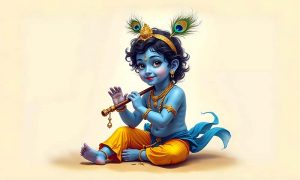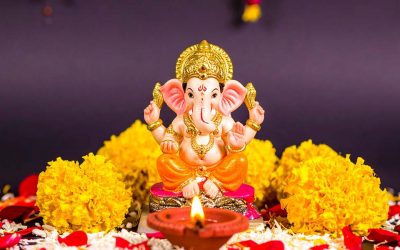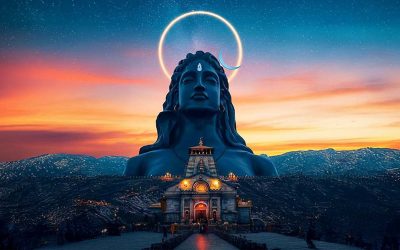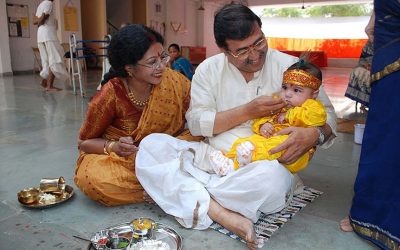Krishna Janmashtami: The History, Significance, and Festivities
Krishna Janmashtami is one of India’s most celebrated festivals, reverently and enthusiastically observed as the birthday of Lord Krishna, the eighth incarnation of Vishnu. Millions of followers always celebrate it throughout the nation and the globe. But beneath the sweets, songs, and festivities lies a deeper significance; one filled with timeless lessons, profound religious fervour, and rich cultural depth. It is not just a celebration but also a time for reflection.
In this article, we will cover all that you would like to know about Krishna Janmashtami; why it is celebrated, what it means, how it is celebrated outside Maharashtra, how it is celebrated at home by families, and what we can learn from the life of Krishna.
Why is Krishna Janmashtami celebrated? 
Krishna Janmashtami marks the birthday of Lord Krishna, said to have been born over 5,000 years ago in Mathura. According to Hindu mythology, Krishna was born to Devaki and Vasudeva in a jail cell, on the eighth day of the dark half (Krishna Paksha) of the month of Bhadrapada (August–September).
When Krishna was born, the wicked King Kansa, Devaki’s brother had usurped the throne and ruled men through cruelty and terror. Devaki’s eighth son was destined to kill him. To counteract this, Kansa put Devaki and Vasudeva in prison and slew their first six sons. The seventh (Balarama) was mysteriously shifted to another womb. Krishna, the eighth, was born in miraculous conditions, with Vasudeva escaping from prison, with baby Krishna in his arms, across the Yamuna to safety in Gokul.
Thus, Krishna Janmashtami is not just a birthday celebration, it is a victory of good over evil, light over darkness, and truth over tyranny.
What Does Krishna Janmashtami Represent?
The Krishna Janmashtami festival is full of symbolic significance:
- Hope amidst despair: Krishna was born in jail, an environment of complete confinement. His birth represents light coming out of darkness, a sign that even amidst the worst, hope can be born.
- Victory of Dharma: Krishna dedicated his life to the revival of dharma (righteousness) and showing the people the path of truth. Janmashtami teaches us to take the right path even when it is difficult.
- Spiritual birth: Spiritually, the birth of Krishna also signifies the awakening of divine consciousness within us. Celebrating Janmashtami is an invitation to self-reflection on our own journey towards truth, bliss, and devotion.
How Krishna Janmashtami is Celebrated Throughout India
Though Krishna Janmashtami is celebrated all over India, every region imparts its own unique flavour to the festival.
Uttar Pradesh
These are the hub of the festival. Since Krishna spent his youth here, the temples are crowded with Ras Lila performances (dramatizations of Krishna’s life), devotional music and dance, and elaborate decor. Thousands of devotees flock to them to experience the religious fervor and relive Krishna’s leelas (divine plays).
Maharashtra
Dahi Handi is perhaps the most widely observed tradition here. The boys gather in groups and create human pyramids that break a pot of curd, butter, or milk suspended high in the air. This represents Krishna’s love for butter and his mischievous nature. It is also a show of the value of co-operation and bravery.
Gujarat
Krishna is worshipped as Dwarkadhish, the king of Dwarka, in the state of Gujarat. Temples are decorated, and the devotees fast, sing bhajans, and offer sweets like panjiri and churma.
Tamil Nadu and Kerala
Here, devotees put tiny footprints (representing Krishna’s footprints) leading to their homes, indicating his arrival. People put beautifully decorated swings with little pictures of baby Krishna, and offer tulsi leaves, butter, and poha.
Odisha and West Bengal
The celebration is carried out with devotees observe fasts and night vigils, and many temples hold spiritual discourses, kirtans, and community prayers.

How is Krishna Janmashtami celebrated at home?
For all families, Janmashtami is a day of devotion, cleanliness, and happiness.
This is how people typically celebrate it at home:
- Fasting
Most people observe a day of fasting, some on water and without food (nirjal vrat), while others consume fruit and milk products. It is cleansing of the body and mind. - Adorn Baby Krishna’s Cradle
Flowers, lamps, and small swings (jhulas) for baby Krishna are decorated in the homes. Idols are bathed, dressed in fresh attire, and put in decorated cradles. - Midnight Celebration
Since Krishna was born at midnight, devotees perform midnight aarti (devotional ceremony), sing bhajans, and recite mantras like “Hare Krishna Hare Rama.” - Sweets Preparation
Favourite foods like butter, poha, kheer, peda, and makhan mishri (crystallised sugar butter) are prepared as offerings. - Reading Scriptures
Numerous individuals read stories of the Bhagavad Gita or Srimad Bhagavatam, which narrate the life and teachings of Krishna.
Lessons That We Can Learn from Lord Krishna
Lord Krishna’s life is replete with wisdom that remains applicable today. Here are a few of the main lessons that we can learn:
- Stand Up for What Is Right
From the Kurukshetra War to the teachings of the Bhagavad Gita, Krishna consistently urged individuals to stand up for dharma, even at the cost of enormous difficulties. - Be Detached but Dutiful
Krishna’s teaching in the Gita is karma yoga i.e., performing one’s duty without attachment to the results. A helpful reminder in our result-oriented world. - Live joyfully
Although he was a warrior, a king, and a philosopher, Krishna was also a man renowned for his light-hearted and playful personality. His friendships, dances, and flute-playing demonstrate the importance of living life with love and laughter. - Balance in Relationships
Krishna was so multifaceted, in the sense that he was a friend (to Sudama and Arjuna), son, brother, lover, and guru. He showed us how to remain grounded, loving, and wise in relationships. - Wisdom with Compassion
Krishna’s teachings were full of compassionate, contextual, and very human. His wisdom encourages us to be wise but not hard-hearted.
Why Krishna Janmashtami Remains Relevant Today
In today’s fast-paced and ever-changing world, Krishna Janmashtami is a time to pause and rekindle not only with spirituality, but also with the values of peace, harmony, and happiness.
Either religious or simply interested in the festival, Krishna Janmashtami invites all to:
- Honor the birth of joy and truth
- Reflect upon our inner journey
- Distribute to loved ones and friends in love and devotion
- Obtain lessons transferable over centuries.
It’s not just a celebration but it’s a call to live a life of purpose, dharma, filled with love, and grounded in joy.
Some Thoughts on Krishna Janmashtami
Krishna Janmashtami is not a date on the calendar, it’s a deeply spiritual occasion. Whether you’re shattering a Dahi Handi, singing midnight bhajans, or simply sitting at home watching Krishna’s stories on TV, there’s something for everyone on this day. May Krishna’s life inspire you to live with courage, smile in the face of adversity, and remain connected to your inner self at all times. If you enjoyed reading this post about Krishna Janmashtami, please share this blog with someone who would be delighted to learn about it. Wishing your family peace, happiness, and good blessings on Janmashtami.






